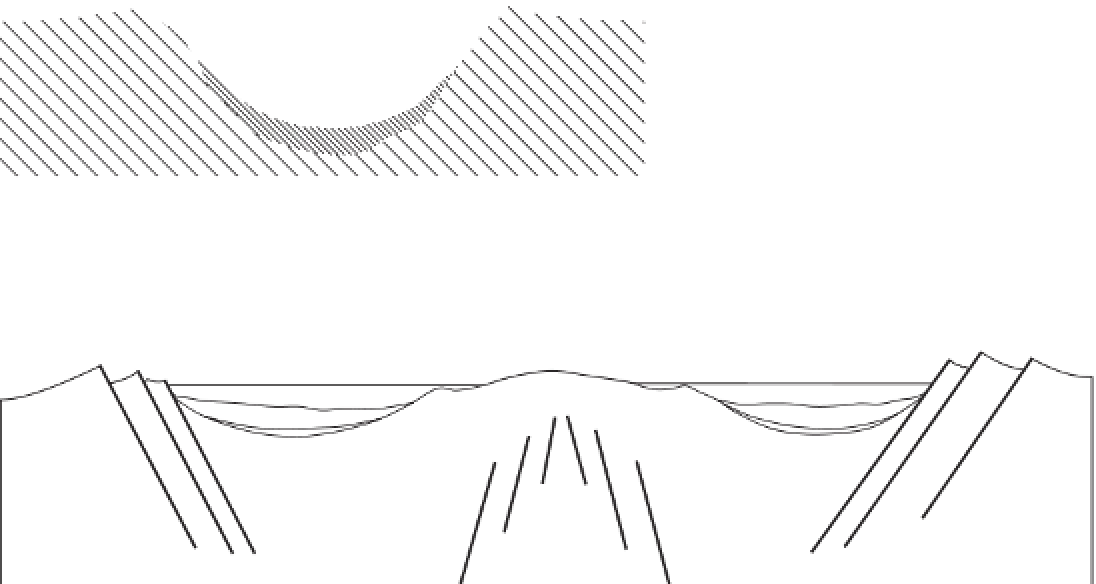Geology Reference
In-Depth Information
( ) Simple impact structure
a
Sedimentary fill
Allochthonous fallback breccia
Overturned
flap
Overturned
flap
D
d
a
Fallout ejecta
Impact melt and melt fragments
d
t
Strongly shocked target rocks
Fractured and brecciated
target rocks
Fault
1km
()Complex impact structure
b
Faulted
rim
Breccia and impact
melt annulus
Central peak
and rings
Breccia and impact
melt annulus
Faulted
rim
Figure 5.11
Simple and complex impact structures.
new impact sites every year. Researchers have also found
several impact structures in the seafloor.
The spatial distribution of terranean impact structures
reveals a concentration on the Precambrian shield areas
of North America and Europe (Figure 5.12). This con-
centration reflects the fact that the Precambrian shields in
North America and Europe have been geologically stable
for a long time, and that the search for, and study of,
impact craters has been conducted chiefly in those areas.
It is not a reflection of the impaction process, which
occurs at random over the globe.
horizontal once the sea has retreated or after they have
been uplifted form characteristic landforms (Table 5.2).
If the beds stay flat and are not dissected by river val-
leys, they form large sedimentary plains (
sediplains
).
Many of the flat riverine plains of the Channel Country,
south-western Queensland, Australia, are of this type.
If the beds stay flat but are dissected by river valleys, they
form plateaux, plains, and stepped topography (Colour
Plate 1, inserted between pages 208 and 209). In sedi-
mentary terrain,
plateaux
are extensive areas of low relief
that sit above surrounding lower land, from which they
are isolated by scarps (see Figure 5.16, p. 135). A bed
of hard rock called caprock normally crowns them. A
mesa
or
table
is a small plateau, but there is no fine
dividing line between a mesa and a plateau. A
butte
is a very small plateau, and a mesa becomes a butte
when the maximum diameter of its flat top is less than
its height above the encircling plain. When eventually
the caprock is eroded away, a butte may become an
LANDFORMS ASSOCIATED
WITH FOLDS
Flat beds
Stratified rocks may stay horizontal or they may be
folded. Sedimentary rocks that remain more or less





















